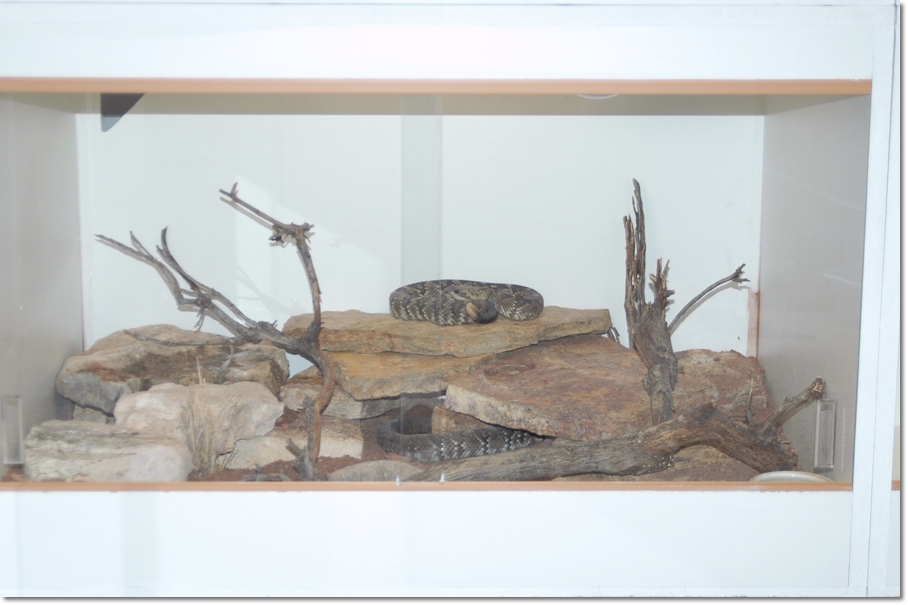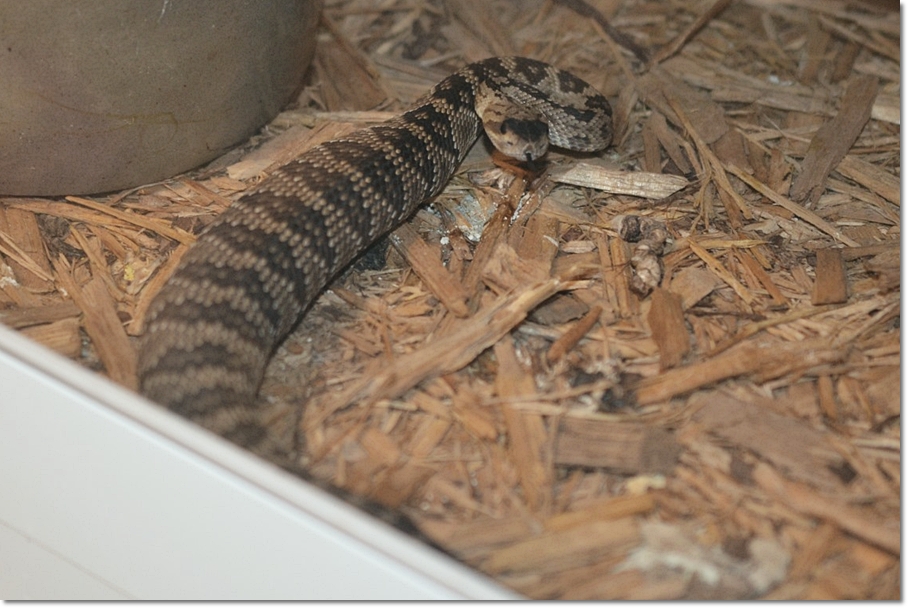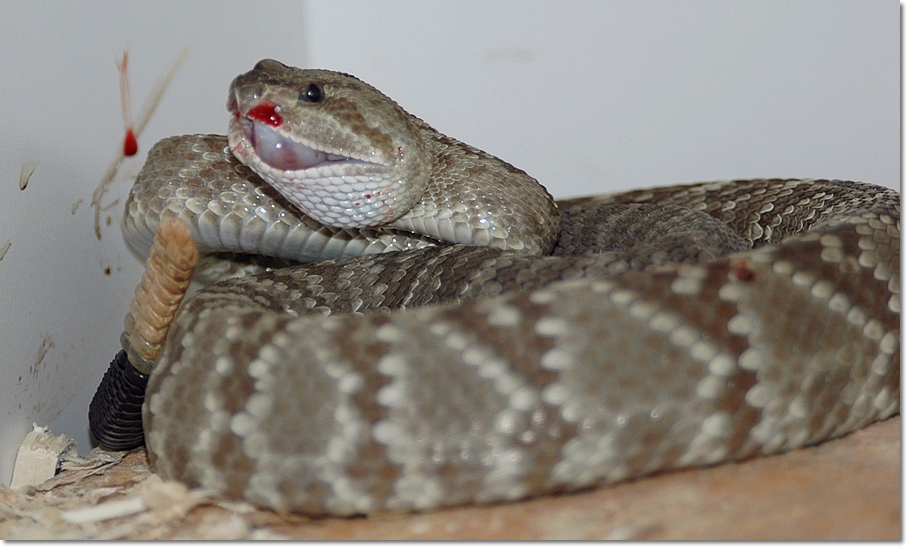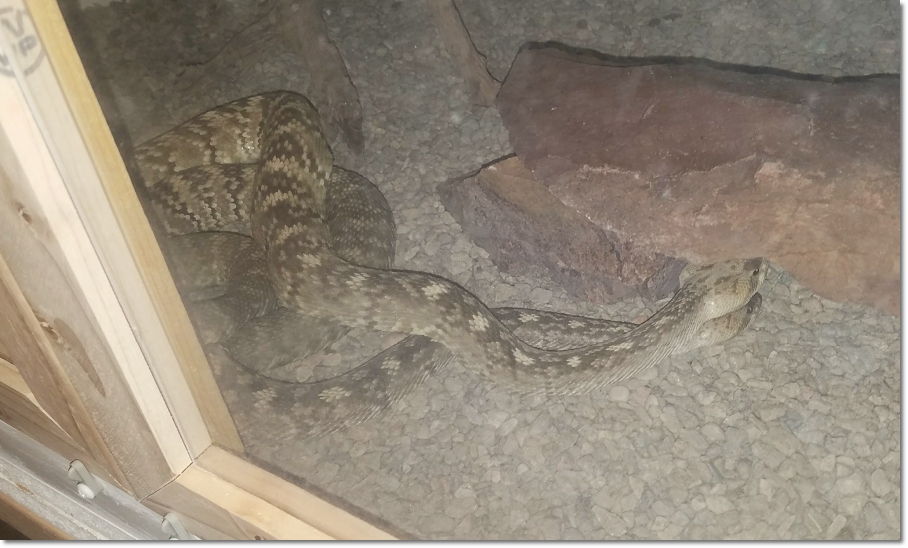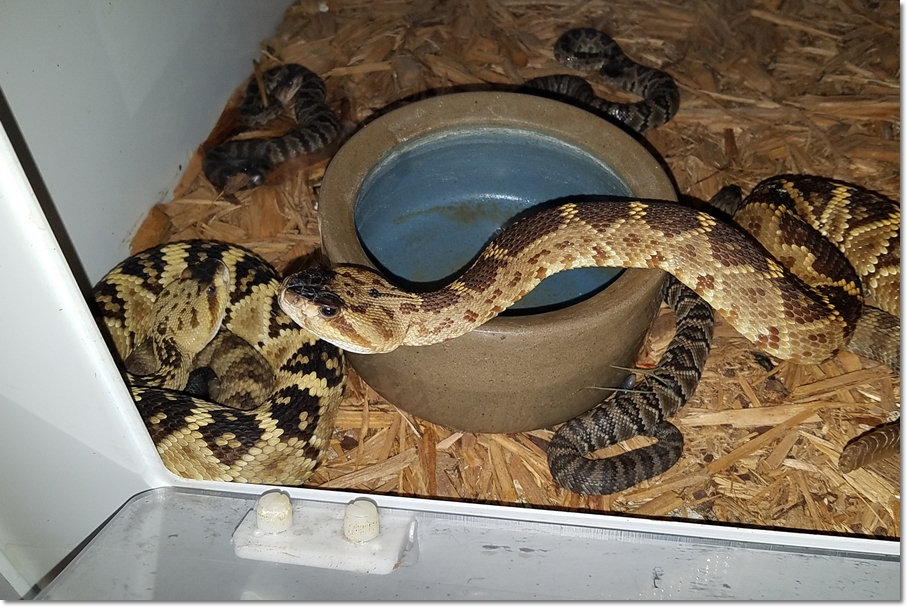
 |
 |
 |
 |
 |
 |
 |
 |
 |
 |
 |
Captive Husbandry of Blacktail Rattlesnakes
The blacktail rattlesnake generally has a calm demeanor and its beautiful coloration and markings are some of the positives for maintaining this species in captivity. However, these two species can be difficult to acclimate to captivity from the wild. Captive bred individuals or young animals make better candidates for captive care. This page primarily dicusses the care of northern blacktail and eastern blacktail rattlesnakes from the United States.
Like many animals, the best source for obtaining individuals is captive bred from a breeder. Unfortunately, these two species are not bred as frequently or consistently as other rattlesnake species. Most individuals that become available are wild caught animals. Both species of blacktail rattlesnakes are legal to collect in the United States with proper licenses from the state it is being collected from. Acclimating wild-collected animals can be challenging. Although these species is fairly docile in the wild, they can be quite nervous and have difficulty adjusting if they do not have a sense of security.
Blacktail rattlesnakes are large rattlesnakes with adults needing ideally at least 24" x 24" in floor space for an adult. Young animals can be housed in shoe-boxes and their enclosure size enlarged as the snakes grow. Enclosures can be constructed of many different materials but air flow should be a main consideration as this species does best with good ventilation. Heat should be set up to be directed downward as this species basks when the opportunity is given. A thermal gradient ranging from 70°F to 80°F with a basking spot that they can bask under during the day should be provided.
Substrate can vary from newspapers and paper towels to dirt, rocks, aspen bedding and mulch. If using misters or misting systems, make sure to allow proper drainage of water so the substrate does not remain damp. I've found cypress mulch to be one of the easiest substrates to use.
Blacktail rattlesnakes are generalists in nature - feeding on a variety of different prey items. They tend to prefer rodents and small mammals it appears. While captive bred or captive born blacktail rattlesnakes tend to take prey a little bit more readily than wild caught animals. Getting wild caught rattlesnakes to take domestic rodents can be difficult. In general, northern blacktail rattlesnakes seem to more readily take domestic rodents than eastern blacktail rattlesnakes. While they have been known to take squirrels and other larger rodents in the wild, most adult blacktail rattlesnakes max out at small to medium rats. Babies, though small in size, seem to prefer large fuzzies or small hopper mice as their first meals despite the prey-to-predator size ratio.
Some keepers keep blacktail rattlesnakes individually and some keep pairs together year-round. One caution when feeding animals housed together is the feeding response. I separate animals for feeding and leave them separated for about 24 hours after. Bites due to a strong feeding response can happen. While bitten animals will often recover without any intervention, it is better not to risk it.
Like most desert rattlesnakes, blacktail rattlesnakes are typically biennial breeders. In captivity, they have been known to produce offspring in back-to-back years. Adults typically breed in the late summer (August through September) in the wild and that is usually the case in captivity. Blacktail rattlesnakes are stimulated by the summer monsoon rains and misting pairs during this time may help stimulate breeding activity. I have found that blacktails breed with or without this rain simulation.
|
